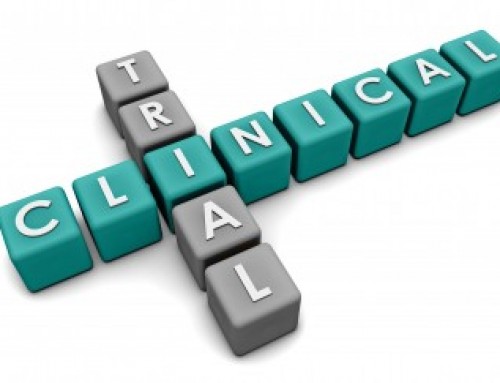“Open source” as applied to culture defines a culture in which intellectual property is made generally available. Participants in such a culture are able to improve and modify those products and redistribute them back into the community. Farmavita.Net is now inviting proposals for “open source pharmaceutical projects”. Web 2.0 based software available at www.farmavita.net is allowing knowledge sharing and management of complex international, multi-center projects.
The open source model can allow for the concurrent use of different agendas and approaches in project development, in contrast with more centralized models of development such as those typically used in pharmaceutical companies.
Software is not the only field affected by open source; many fields of study and social and political views have been affected by the growth of the concept of open source. Advocates in one field will often support the expansion of open source in other fields, including Linus Torvalds who is quoted as saying, “the future is open source everything.”
The idea of open source is then to eliminate the access costs of the user and the creator by reducing the restrictions of copyright and patent protection. This will lead to creation of additional works, which build upon previous work and add to greater social benefit. Additionally, some proponents argue that open source also relieves society of the administration and enforcement costs of copyright and patent protection. Others argue that society loses through open sourced goods. Because there is a loss in monetary incentive to the creation of new goods, some argue that new products will not be created. This argument seems to apply particularly to the business model where extensive research and development is done, e.g. pharmaceuticals. It is reasonable that huge pharmaceutical investment into R&D should be protected in case of new medicine development. However, it is easy to figure out that there is substantial quantity of intellectual property which is useless to the owners and is still kept protected or confidential. This case is mutual loss, for owner and for community.
The open source movement has been the inspiration for increased transparency and liberty in release of biotechnology research by CAMBIA. The key goal of CAMBIA is to promote open-source innovation in the wider arena of biotechnology. They see open-source as an enabler of innovation, and have developed a suite of technologies, patents and licenses that in their view will give innovators greater freedom to develop and market new biotechnologies.
In biotechnology, intellectual property issues often arise, with much of the enabling technology covered under complicated patents. It is CAMBIA’s opinion that the current regime creates:
-
a requirement for expensive, high-margin applications that fail to address the nutritional and market needs of impoverished societies
-
an environment hostile to competition; the high-capital requirements to acquire and negotiate patent rights denies smaller ventures entry into the marketplace, thus concentrating market power into the hands of the wealthiest companies
-
self-reinforcing barriers to future improvement, as various parties aggressively hoard their IP in fear of losing out, but end up limiting their freedom to innovate, best known as the Tragedy of the anticommons
As a concrete example of IP, the current industry-standard for plant improvement, injecting genes into crops via Agrobacterium tumefaciens, carries with it a thicket of patent rights, held by many parties.
For these reasons CAMBIA develops alternative systems to allow innovators to “work-around, work-above” the current system. These systems include:
- patented technologies, offered royalty-free in exchange for reciprocal sharing agreements
- PatentLens, a database of patents in various nations, to allow innovators to determine freedom to operate
- BioForge, a collaborative online discussion/development tool
There have been several proposals for open-source pharmaceutical development,which led to the establishment of the Tropical Disease Initiative. There are also a number of not-for-profit “virtual pharmas” such as the Institute for One World Health and the Drugs for Neglected Diseases Initiative.
Farmavita.Net has recently started the project named “Farmavita.Net – Open Source Pharmaceuticals”. The project is targeted to development of sharing of know-how for manufacture of essential and life saving medicines. It is mainly dedicated to the countries with less developed economies where local pharmaceutical production is insufficient for national needs. It will be limited to generic medicines with established use. By the definition, medicinal product have a “well-established use” if is used for at least 15 years, with recognized efficacy and an acceptable level of safety. In that event, the expensive clinical test and trial results could be replaced by appropriate scientific literature. Beside safety of medicine, it is also important that risk of third party patent infringement is minimized with such older products.
Established manufacturers are invited to share their:
- Drug Master Files (DMF) for active pharmaceutical ingredients (API)
- Formulation and directions for manufacture of finished dosage product.
- Specifications and quality control methods for finished dosage product, excipients and packaging materials.
- Appropriate scientific literature showing “well-established use”.
It is expected that user will adjust available know-how to the local manufacturing facilities, make stability studies of the product and obtain national manufacturing and sales licenses. They should start local manufacture and distribution.
Also, it is expected that know-how will be gathered from several different manufacturers. Some of them may be manufacturers of API and some may be manufacturers of dosage forms. Question could be made about motivation of established manufacturers for sharing of their know-how. We can point out several motivation factors:
- Will bring “way to health” to big number of people in countries will less developed economies.
- Participation in the open source pharmaceutical project may add to promotion and public image of the every participant.
- It will develop new business contact which may result in commercial business development.
- DMF`s are already exchanged between companies without royalty payments.
- Specifications and quality control methods for finished dosage product, excipients and packaging materials are already publicly available at several national pharmacopeias.
- Scientific literature showing “well-established use” is publicly available at internet databases (for instance PubMed – http://www.ncbi.nlm.nih.gov/entrez/query.fcgi)
- The most of documentation is publicly available, but is not professionally gathered and compiled.
For sure there will be number of benefits for every participant. All this benefits are not visible from this starting point. You should contact Farmavita.Net if you would like to participate in this new attractive project.





Leave A Comment